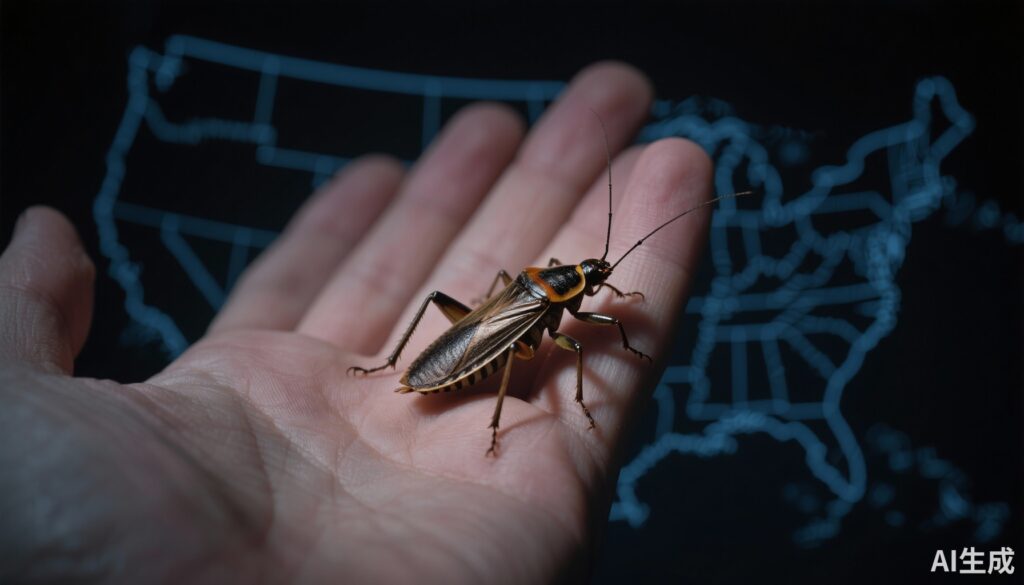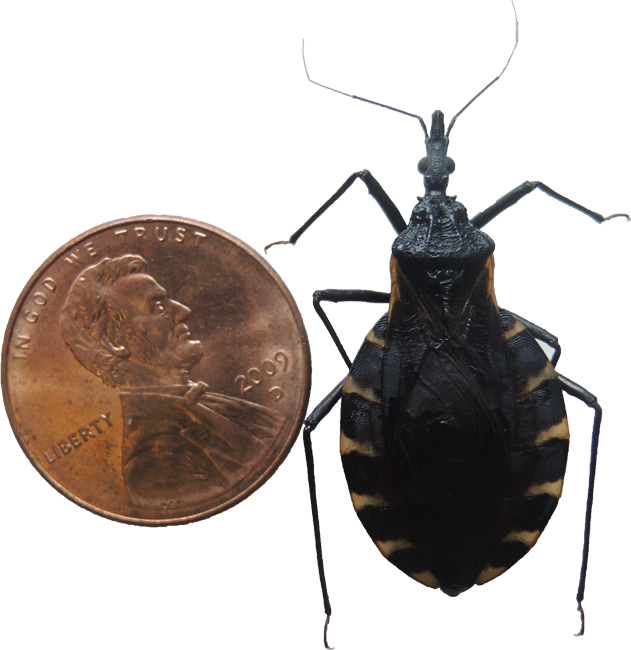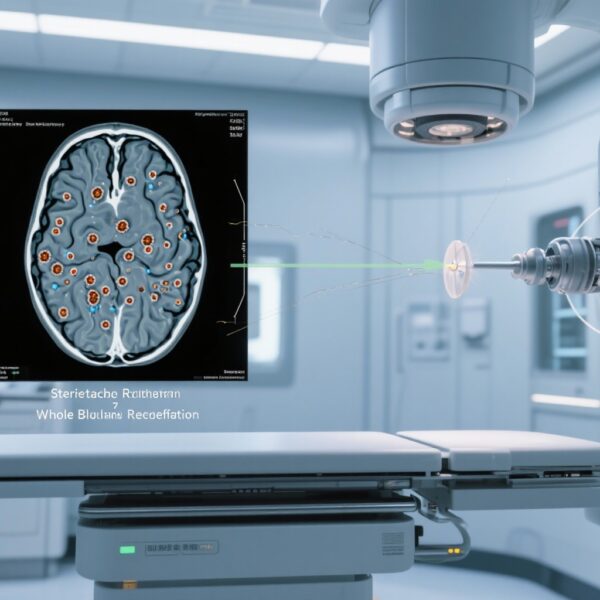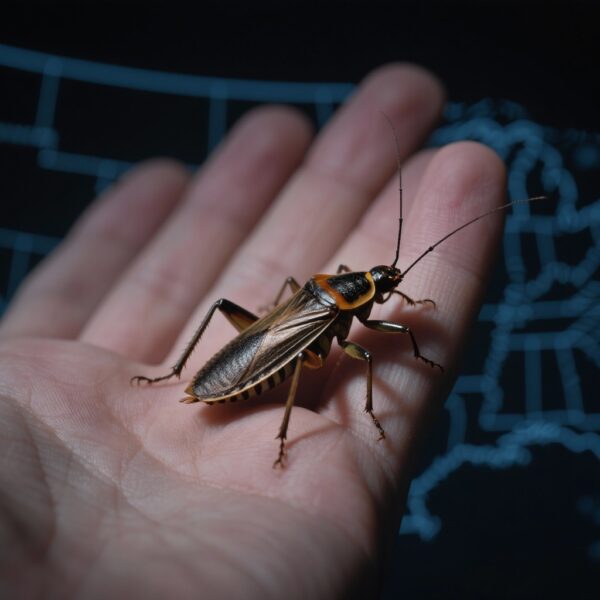Introduction
Interactions between humans, wildlife, and the environment are complex and can sometimes lead to the transmission of infectious diseases. One such disease of growing concern in the United States is Chagas disease, caused by the parasite Trypanosoma cruzi and transmitted primarily by blood-sucking insects known as kissing bugs. Recent studies estimate that approximately 280,000 people in the U.S. are infected with this parasite, though many may be unaware due to the disease’s often silent progression. Understanding the eco-epidemiology — the relationship between ecological factors and disease dynamics — of Chagas disease and its vector is essential to protecting human and animal health.
The Vector: Understanding Kissing Bugs
Kissing bugs, scientifically known as Triatomine bugs, are nocturnal blood-feeders active mainly during the night. Adult bugs range from half an inch to one inch in length, emerging from small oval eggs and passing through five juvenile (nymphal) stages before reaching adulthood. Some species can live for up to two years.
Unlike ticks, kissing bugs do not attach to their hosts but feed in a way that often goes unnoticed, as their bites usually do not hurt during feeding. These insects feed multiple times over their lifespan on a variety of hosts, including humans, dogs, and a diverse array of wild animals.
They are widely distributed across North, Central, and South America. In the U.S., kissing bugs have been found in 29 states, primarily in southern and mid-southern regions, with Texas, New Mexico, and Arizona harboring the highest species diversity and population densities. Remarkably, approximately 50% of kissing bugs in these regions carry the Chagas parasite.
The Parasite: Trypanosoma cruzi and Its Transmission
Trypanosoma cruzi (T. cruzi) is a protozoan parasite responsible for Chagas disease, affecting people, dogs, and various wild mammals. Kissing bugs acquire the parasite by feeding on infected hosts and subsequently carry the parasite in their digestive tract.
(Photo: Rachel Curtis-Robles)
Size comparison of a kissing bug with a U.S. penny.![]()
![]()
![]()
![]()
![]()
![]()
![]()
![]() Transmission to humans and animals does not occur through the bug’s saliva or bite itself but rather through contact with the bug’s feces, which contains the parasite. Some kissing bugs defecate while feeding; if feces containing T. cruzi enter the bite site or mucous membranes (such as the eyes or mouth) through scratching or rubbing, infection can occur. Dogs may also become infected by ingesting kissing bugs.
Transmission to humans and animals does not occur through the bug’s saliva or bite itself but rather through contact with the bug’s feces, which contains the parasite. Some kissing bugs defecate while feeding; if feces containing T. cruzi enter the bite site or mucous membranes (such as the eyes or mouth) through scratching or rubbing, infection can occur. Dogs may also become infected by ingesting kissing bugs.
In endemic regions in Central and South America, some kissing bugs have adapted to live inside human dwellings, increasing transmission risk. Other modes of transmission include congenital (mother to baby) infection, blood transfusions, organ transplantation, and consumption of food or drink contaminated with kissing bug feces.
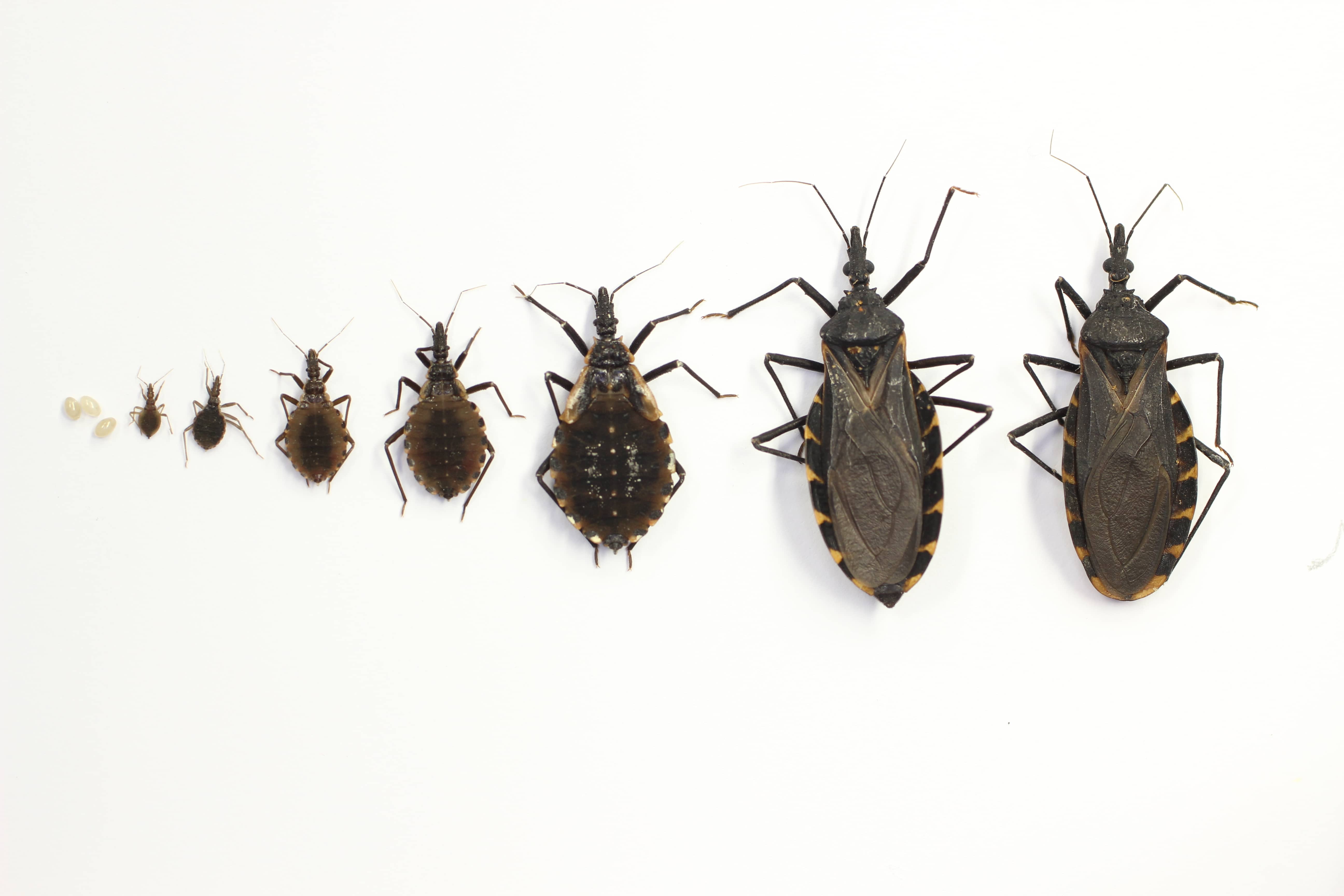
(Photo by Gabriel Hamer)
Chagas Disease in People: Clinical Features and Epidemiology
The true number of Chagas disease cases in the U.S. is uncertain but estimated to be at least 300,000, with some reports exceeding one million. Surveillance is limited since most states do not routinely report cases, although efforts are underway in states like Texas, Arizona, and California to improve case tracking.
Individuals who have lived in or traveled to parts of Central and South America carry a higher risk, but increasing evidence points to locally acquired infections in the southern U.S., where kissing bugs and infected wildlife are common.
Chagas disease manifests in two phases. The acute phase occurs shortly after infection and may last weeks to months. Symptoms can be nonspecific and mild — fever, fatigue, body aches, headache, rash, gastrointestinal symptoms like diarrhea or vomiting, and loss of appetite — or sometimes absent altogether, complicating diagnosis.
Approximately one-third of infected individuals develop chronic Chagas disease years or even decades later. This phase may lead to serious heart complications such as cardiomyopathy, arrhythmias, and heart failure, as well as digestive and neurological issues.
If infection is suspected, blood tests and specialized diagnostics are available, and clinicians can consult the Centers for Disease Control and Prevention (CDC) for guidance on testing and treatment, though no vaccine currently exists.
Impacts on Wildlife and Domestic Animals
Trypanosoma cruzi is a zoonotic parasite, meaning it infects a broad range of wild animals—including woodrats, raccoons, coyotes, and opossums—which serve as reservoirs. Birds and reptiles cannot harbor the parasite but may still be blood meal sources for kissing bugs.
Infected animals may not show symptoms but maintain the parasite lifecycle, contributing to ongoing transmission risks.
Chagas Disease in Dogs: Clinical Aspects
In dogs, T. cruzi infection can lead to cardiac disease, occasionally presenting with symptoms similar to human disease such as heart arrhythmias and failure. Many infected dogs remain asymptomatic, though factors like stress, activity, age, and variation in parasite strain influence disease severity.
Diagnostic testing is accessible, with the Texas Veterinary Medical Diagnostic Laboratory offering antibody screening. Owners discovering a positive result should work closely with veterinarians to assess and monitor health.
Currently, limited treatment options are available for canine Chagas disease, and there is no vaccine. Ongoing research aims to develop effective therapies.
Studies from Texas A&M University and others have documented hundreds of confirmed canine cases across many counties, demonstrating the widespread presence of the disease in domestic animals.
Environmental Factors and Risk Management
The risk of Chagas disease correlates directly with the environment — specifically, the presence of kissing bugs, infected reservoir hosts, and suitable habitats. Human dwellings near wildlife habitats or poorly maintained homes increase risk.
Preventive measures include:
– Sealing cracks and openings in homes to prevent kissing bug entry.
– Ensuring window and door screens are intact.
– Eliminating wild animal nests and debris near homes to reduce host presence.
– Turning off outdoor lights at night to discourage kissing bug attraction.
– Consulting pest control experts to employ integrated pest management strategies responsibly.
– Managing dog kennels carefully, especially in endemic regions, to protect pets from kissing bug exposure.
Patient Scenario: A Houston Family’s Encounter with Chagas Disease
Maria Rodriguez, a 38-year-old woman living in Houston, Texas, sought medical advice after noticing intermittent fatigue and occasional palpitations. She recalled a recent camping trip where she noticed unusual insects around her cabin at night. Her doctor ordered tests which revealed T. cruzi infection.
While asymptomatic during the acute phase, Maria’s diagnosis prompted cardiac monitoring and counseling. Her family was educated on reducing contact with kissing bugs by improving home maintenance and managing pets.
Maria’s case highlights the need for awareness among clinicians and the public in regions where kissing bugs are present.
Conclusion
Chagas disease, transmitted by kissing bugs, represents a significant but underrecognized public health issue in the United States. Understanding the biology of the vector and parasite, recognizing the disease’s clinical manifestations, and implementing preventive environmental and behavioral measures are critical steps toward reducing disease burden.
Enhanced surveillance, better diagnostic accessibility, and ongoing research into treatments and vaccines will improve outcomes for those affected. Public education and collaboration between ecologists, medical professionals, veterinarians, and the community are essential in confronting this emerging threat.
References
1. Bern C. Chagas’ Disease. New England Journal of Medicine. 2015;373(5):456-466. doi:10.1056/NEJMra1410150 IF: 78.5 Q1 .2. Kjos SA, Snowden KF, Olson JK. Tracing the path of Chagas disease: canine sentinels and other tools. Vector-Borne and Zoonotic Diseases. 2008;8(4):455-463.
3. Curtis-Robles R, Ryckman EM, Hamer SA. Kissing Bug Geo-Distribution, Behavior, and Chagas Disease Risk in the United States. Journal of Vector Ecology. 2018;43(2):260-267.
4. Centers for Disease Control and Prevention. Chagas Disease: Epidemiology & Risk Factors. https://www.cdc.gov/parasites/chagas/epi.html
5. Weatherhead J, Hotez PJ, Mejia MB. Chagas Disease in the 21st Century: A Public Health Approach. Clinical Microbiology Reviews. 2017;30(4):959-987.
